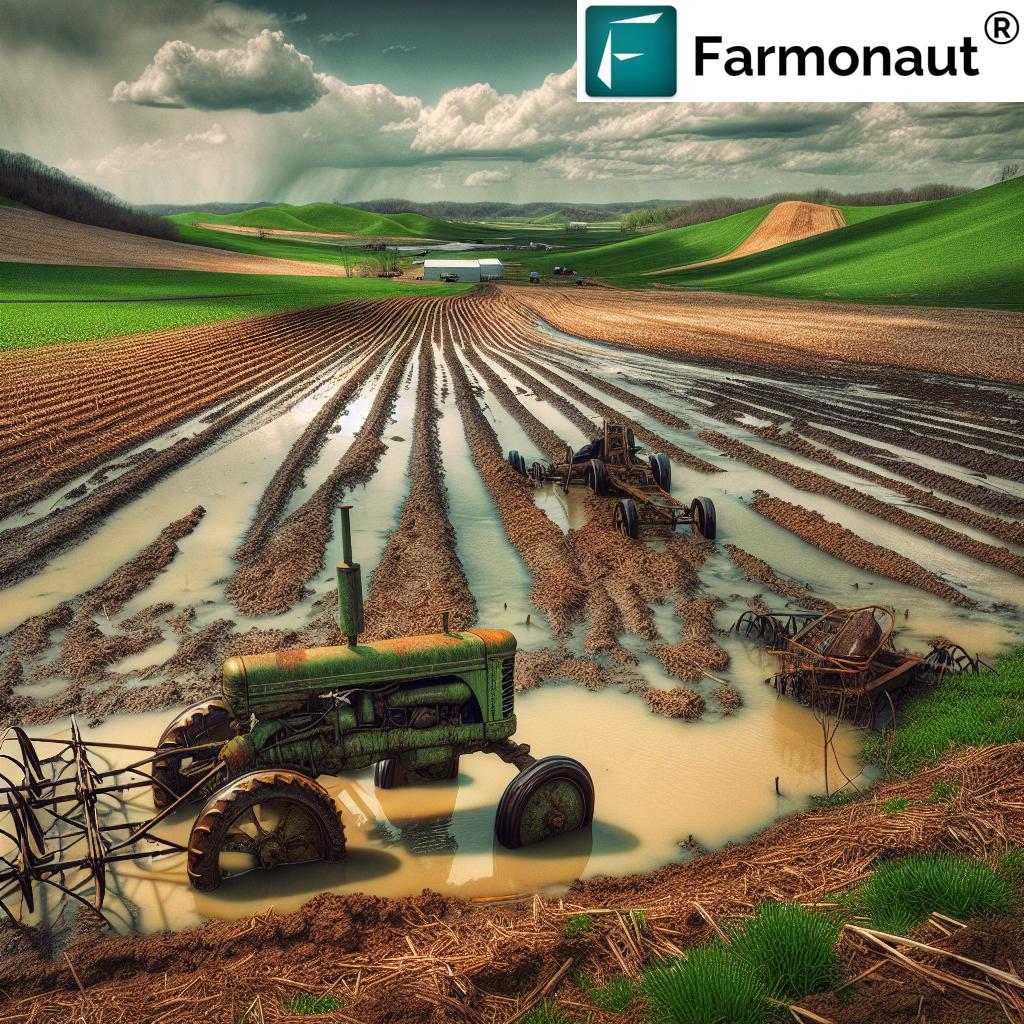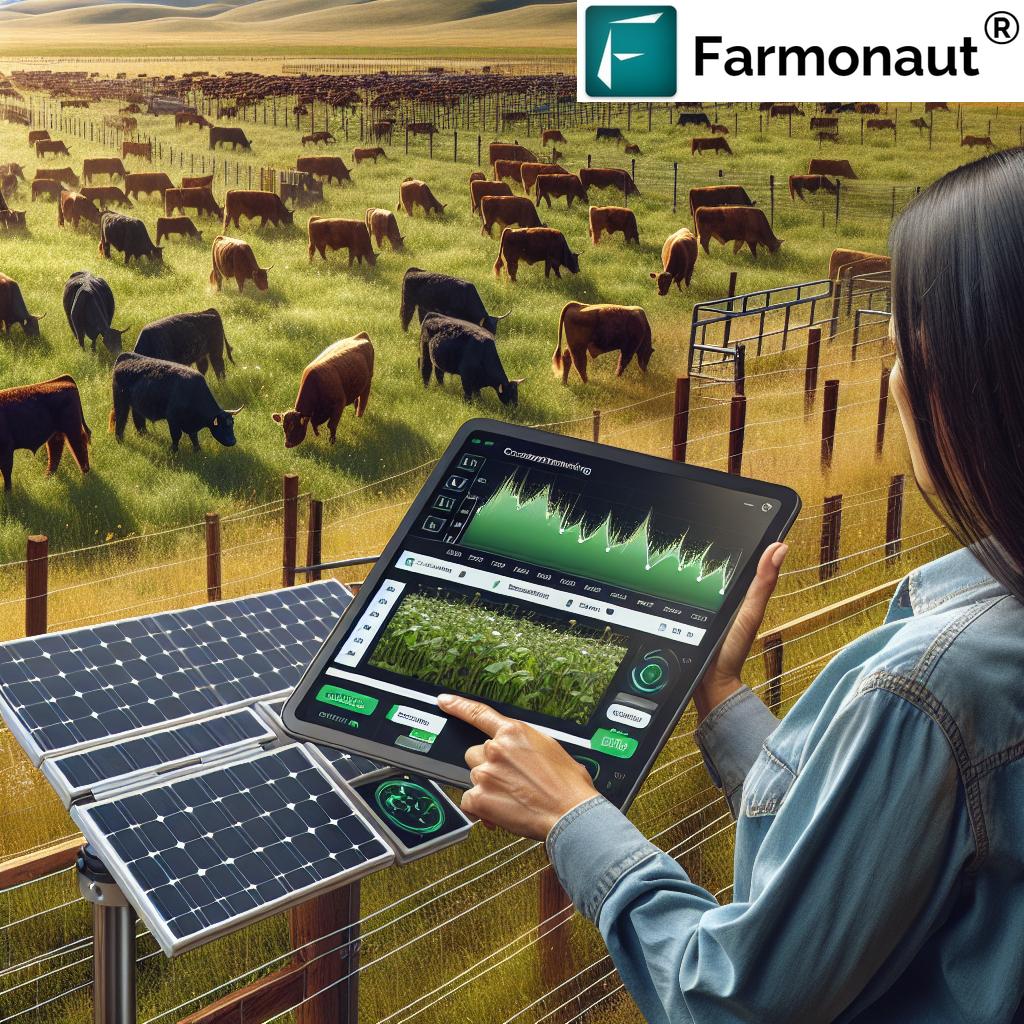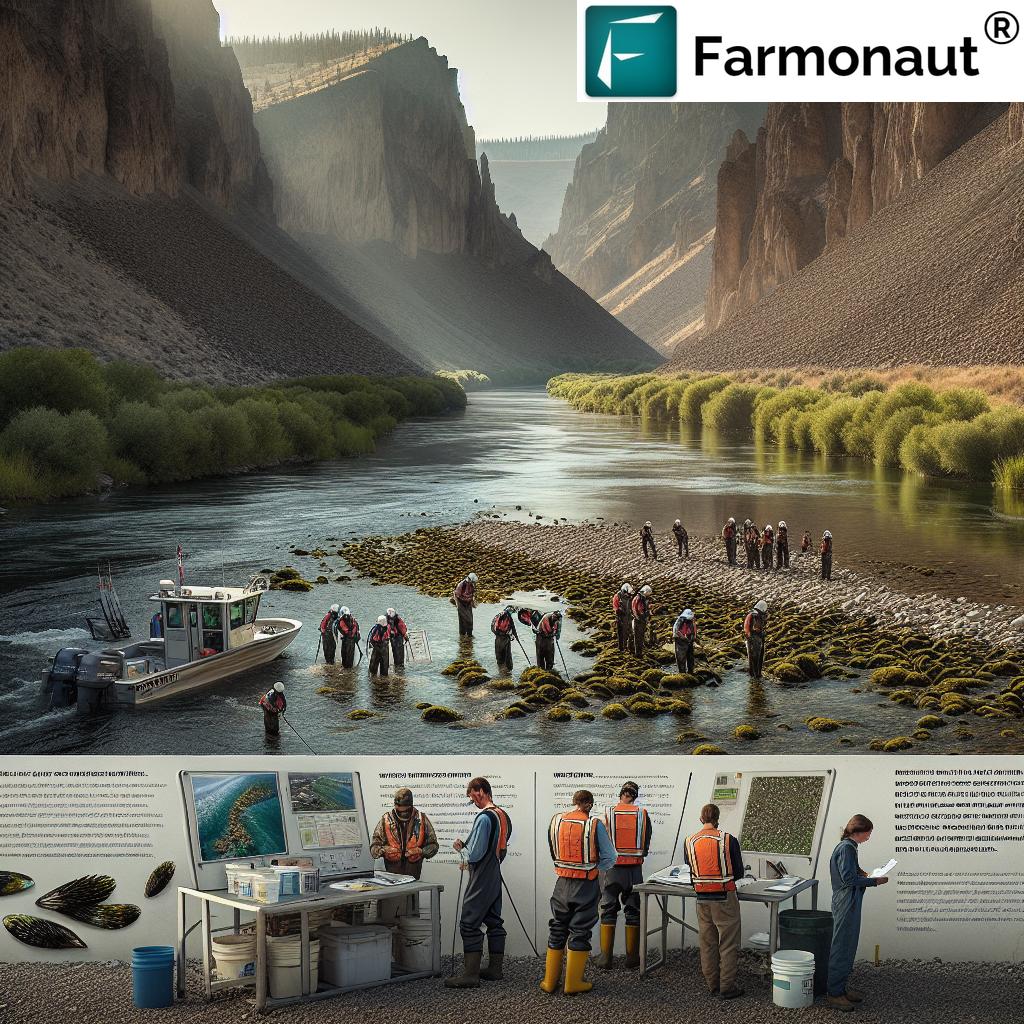Crop Spraying in Bloomington IL: Top Innovations for 2025
“In 2025, over 75% of Bloomington IL crop spraying uses AI-powered precision agriculture technologies.”
Introduction: Crop Spraying in Bloomington IL and Its 2025 Landscape
Crop spraying in Bloomington IL remains a cornerstone of the agricultural system, playing a critical role in maximizing crop yields and ensuring food security in one of the United States’ most productive regions. As we step into 2025, the combination of innovations, updated regulatory frameworks, and increasingly sustainable methods is fundamentally reshaping how crop protection operations are conducted.
Positioned at the heart of the Illinois corn and soybean belt, Bloomington is uniquely reliant on effective crop protection measures to maintain its productivity. Robust spraying strategies in Bloomington not only help combat pests, diseases, and weeds, but also support sustainable soil health and environmental protection throughout the region.
Why Bloomington IL?
This region is home to expansive croplands that support both national and global food supply. The area’s success relies heavily on leveraging the latest technologies and precision agriculture practices to boost efficiency, reduce costs, and achieve higher, more reliable yields. From GPS-guided tractors to AI-powered drones, the latest crop spraying in Bloomington IL is at the intersection of tradition and innovation.
Technological Innovations Driving Crop Spraying in Bloomington IL
The landscape of crop spraying in Bloomington IL has evolved dramatically, thanks in large part to radical advances in technology. Where traditional practices once focused on broad, uniform application of chemical inputs, modern operations rely on near real-time data, automation, and AI to sharpen their focus and minimize unnecessary chemical usage.
Key Innovations Transforming Bloomington Spray Operations
- GPS-Guided Sprayers: Today’s equipment uses GPS navigation to target specific fields, sections, and even rows. This means chemicals are only applied where needed, reducing waste and minimizing environmental impact.
- Variable Rate Technology (VRT): VRT-enabled sprayers can adjust dosage on-the-fly, based on satellite or drone data indicating plant health, soil characteristics, or pest presence. This leads to improved yield and greater cost efficiency.
- Data-Driven Decision Support: Use of machine learning and AI supports hyper-local decision-making, ensuring every spraying operation is perfectly matched to its specific conditions.
- Integration of UAVs and Drones: Drones have become increasingly employed for targeted spraying—especially in smaller plots, hard-to-reach areas, or fields with wet conditions that risk ground compaction from heavy machinery.
- Real-Time Satellite Monitoring: Satellite imagery enables immediate identification of problem areas, variability in crop health, and more accurate targeting for crop protection.
- Automated and Robotic Sprayers: The rise of autonomous vehicles (robots) brings constant, low-impact, and highly-targeted application to even the largest fields.
By 2025, over 75% of Bloomington IL farmers have adopted AI and data-powered approaches in some form, integrating them with traditional methods to achieve a new level of effectiveness and sustainability.
How Precision Agriculture Tools Are Changing Crop Spraying
- Field Mapping with Drones and Satellites
- Yield Monitoring Sensors
- Weather-Responsive Scheduling Systems
- Remote-Controlled Sprayer Activation
- Historical Data Analytics for Predictive Pest Management
Want to integrate satellite and AI insights into your existing systems? Visit our Farmonaut API page to power custom automation in your agribusiness or research.
For developers: Dive into the technical details with our developer documentation for full API integration support.
Learn more about how our real-time crop monitoring solutions can empower your farm, enhance productivity, and make crop spraying in Bloomington IL more strategic.
Comparing Traditional and Innovative Crop Spraying Methods
Boom times for innovation: How do the legacy spraying methods stack up to today’s leading-edge technology in Bloomington IL? Below is a comparative table summarizing the core differences, benefits, and estimated adoption rates in the region for 2025.
| Method/Technology | Main Features | Estimated Yield Improvement (%) | Environmental Impact | Cost Efficiency | Adoption Rate in Bloomington IL (2025) |
|---|---|---|---|---|---|
| Manual Spraying | Handheld or backpack sprayers; labor-intensive; covers small areas | 5-10% | High (due to non-target application) | Low | <5% |
| Traditional Ground Boom Spraying | Tractor-mounted wide booms; standard rate, less accuracy | 12-15% | Medium to High | Medium | 15% |
| Standard Aerial Spraying | Fixed-wing aircraft or helicopters for large coverage | 15-20% | Medium | Medium | 10% |
| Precision GPS-Guided Spraying | GPS & AI, real-time field mapping, reduced overlap/waste | 22-30% | Low | High | 40% |
| Variable Rate Tech (VRT) Spraying | Sensors/AI adjust chemical dose by crop condition | 30-36% | Very Low | High | 55% |
| Drone (UAV) Spraying | Precision, under-canopy, hard-to-reach, less compaction | 30-40% | Very Low | High | 25% |
| Autonomous Robotic Sprayers | AI/robotics, continuous monitoring/apply microdoses | 35-45% | Very Low | High | ~5% (rising) |
Estimated values based on regional adoption trends, technological progress, and expert projections for 2025. Keyword in Image Alt Example: “Drone Spraying Equipment Advancing Crop Spraying in Bloomington IL”.
Key Takeaway:
- Yield improvement and sustainability are highest with precision GPS, VRT, and drone-based methods.
- Adoption of innovative crop spraying in Bloomington IL will continue to rise as technology becomes more accessible.
“Precision spraying advancements in Bloomington IL reduced chemical usage by 32% between 2021 and 2025.”
Precision Agriculture Practices: Driving Efficiency in Crop Spraying in Bloomington IL
Precision agriculture continues to be the most transformative factor in the way crop spraying in Bloomington IL is conducted. By using advanced sensors, GPS, and AI-driven analytics, farmers can now apply inputs only when and where they are truly needed. This optimized application strategy not only reduces unnecessary chemical use but also promotes healthier crops, soil, and surrounding ecosystems.
Core Elements of Precision Crop Spraying in Bloomington IL
- Site-Specific Management: Satellite and drone imagery diagnose variability in soil, crop health, and moisture, allowing for customized spray schedules.
- Automated Equipment: Modern sprayers—both ground-based and aerial—are equipped with GPS and prescription maps, ensuring accurate targeting.
- Integrated Data Platforms: Farmers manage operations through data dashboards, often linked to satellite mapping and weather forecasting tools.
For example, Farmonaut’s satellite-based platform offers both real-time monitoring and AI-powered advisory that supports efficient scheduling and resource deployment in large-scale or small farm operations. Our integrated tools directly support productivity and sustainability goals in Illinois and beyond.
Precision Tools for Maximizing Yield and Reducing Environmental Impact
- Real-time weather data prevents drift and runoff.
- AI-based pest scouting alerts allow interventions only when threats are present, reducing unnecessary spraying.
- VRT allows different sections of a single field to receive only the necessary chemical input based on precise soil and crop data.
Interested in advanced field monitoring and yield optimization?
Explore our Farmonaut Large-Scale Farm Management platform for detailed maps, AI advisories, and resource management solutions. This web-based application is engineered to support farming operations of any size—helping you target sprays with precision, save input costs, and boost sustainability.
Drones (UAVs) & Aerial Advances in Crop Spraying in Bloomington IL
The surge in the adoption of drones and UAVs has redefined the possibilities for crop spraying in Bloomington IL. These unmanned vehicles have quickly become an indispensable tool for farmers and custom applicators, enabling efficient, precise, and environmentally responsible operations across variable field conditions.
Key Advantages of Drone & UAV-Based Spraying in Bloomington, Illinois
- High Precision Targeting: Drones can fly extremely close to the crop canopy, delivering accurate coverage with minimal drift.
- Flexibility in Small or Wet Plots: Where ground equipment faces risks of compaction or stagnates in muddy soil, drones excel—allowing for timely application regardless of weather.
- Reduced Labor & Quick Deployment: Fewer operators needed; ideal for urgent pest outbreaks or disease control.
- Data Collection: Beyond spraying, drones gather high-resolution imagery and environmental data to further guide precision farming strategies.
- Environmental Safety: Accurate spraying reduces off-target chemical deposition and protects adjacent waterways or non-target habitats.
Commercial drone spraying is regulated in Illinois. Operators must comply with both the FAA and state guidelines concerning unmanned aerial application, but 2025 projections show strong adoption in Bloomington for specialized cases and high-value crops.
Bloomington’s Shift to Advanced Aerial Spraying: 2025 Trends
- More smaller farms and contractors are investing in drone fleets for their multi-tasking ability in scouting, mapping, and actual spraying.
- Aerial equipment is now often equipped with variable rate and GPS control, blending the traditional benefits of speed and scale with modern accuracy.
Local authorities expect a continued rise in drone usage as costs decrease and AI technology further automates flight operations and data analytics in crop protection.
Regulatory and Environmental Considerations in Crop Spraying in Bloomington IL
Crop spraying in Bloomington IL is subject to detailed regulatory oversight by both federal and state entities—the EPA and the Illinois Department of Agriculture are at the forefront, ensuring safe, sustainable, and responsible application of crop protection chemicals.
Key Regulatory Guidelines (2025)
- Buffer Zones & Application Timing: Regulations require maintaining protective buffer areas near waterways and habitats, as well as restrictions on wind speed and weather conditions during application to minimize drift.
- Chemical Approval & Labeling: Only EPA-approved pesticides, herbicides, and fungicides are allowed, alongside detailed record-keeping and licensing of both operators and equipment.
- Integrated Pest Management (IPM): Illinois agencies encourage combining non-chemical and chemical controls, with periodic scouting and a preference for lowest-toxicity inputs.
- Environmental Reporting: Enhanced compliance mechanisms require reporting chemical use, incidents, and environmental impact metrics.
As we move through 2025, both public and private sector initiatives are incentivizing the adoption of greener, sustainable methods through tax credits and technical support programs for farmers in Bloomington and greater Illinois.
Integrated Resource and Carbon Management Tools
Looking to meet carbon and sustainability mandates for 2025 and beyond? Our Farmonaut Carbon Footprinting solution delivers real-time tracking of field emissions and resource use, helping farms and agri-businesses in Illinois ensure compliance—and demonstrate stewardship.
Sustainable Crop Spraying Methods and Soil Health in Bloomington IL
Sustainability in crop spraying has become a key focus in recent years. With consumer demand for eco-friendly food and heightened awareness of environmental risks, the shift toward practices that promote soil health and protect water quality is evident throughout Bloomington.
Leading Sustainable Practices for 2025
- Use of Low-Toxicity/Bio-Pesticides: Rapid adoption of products with lower persistence and faster degradation to reduce negative environmental impact.
- Cover Cropping & Buffer Strips: Protects soils from erosion, absorbs residual chemicals, and limits runoff to nearby waterways.
- Minimal or Strip Tillage: Preserves organic matter and improves water retention, supporting healthier and more resilient crops.
Farmonaut enables continuous satellite-based tracking of crop health and soil condition, providing evidence for sustainable certifications and improving farm eligibility for financing and insurance.
For robust traceability from field to fork (including input application and harvest practices), explore our blockchain-based traceability system — designed to provide transparent, secure product tracking for agribusinesses in Bloomington and beyond.
Economic Impact, Farm Sustainability, and Operational Efficiency
Crop spraying in Bloomington IL remains a significant investment for local farmers: while advanced equipment, drones, and precision platforms can carry a higher initial cost, the economic returns are clear. With input prices on the rise and competition tightening, the focus for 2025 centers on cost-saving through operational efficiency and yield optimization.
- Precision input use saves 25-40% on chemical costs per acre, averaging $40-$60 in annual savings per field compared to traditional methods.
- Labor and time costs decline due to reduced manual operations and better scheduling.
- Market premiums are increasingly available for crops managed with sustainable, traceable spraying methods.
Farmonaut’s subscriptions (see pricing table below) are designed to be scalable and affordable—whether monitoring a few acres or running a regional agribusiness operation. The subscription model allows for flexible updates and customization as technology evolves, keeping even the smallest farms in Bloomington competitive.
Looking for farm vehicle and fleet optimization? Our fleet management tools allow you to track, schedule, and monitor equipment usage for maximum productivity and operator safety across even dispersed Bloomington acreage.
Emerging Challenges and Solutions for Crop Spraying in 2025 and Beyond
Despite the immense advances in crop spraying in Bloomington IL, several challenges remain that will shape future innovation:
- Pesticide Resistance: Some weeds and pests continue to evolve resistance, requiring ongoing adaptation of chemicals, integrated approaches, and biopesticides.
- Pollinator Health Concerns: The impact of certain sprays on bees and beneficial insects demands continual improvement of application timing, product selection, and no-spray buffer creation.
- Climate Variability: Sudden changes in weather patterns make precise scheduling and predictive analytics more important; AI and weather-linked monitoring systems are essential for reducing risk and avoiding spray drift/loss.
- Operational Complexity: Integrating multiple data streams (weather, satellite, equipment sensors) requires user-friendly platforms to avoid data overwhelm and enable real action.
Farmonaut’s real-time AI advisories and environmental monitoring help address these issues, supporting Bloomington’s farmers to navigate new regulations, ensure sustainable sprays, and maintain eligibility for loans and crop insurance.
Want fast, satellite-backed claims processing? Check out our Crop Loan and Insurance Satellite Verification tools for risk reduction and easier financing.
Future Trends to Watch in Bloomington Crop Spraying
- Wider adoption of autonomous robotic spray vehicles and swarms
- Expansion of blockchain traceability for chemical inputs across entire supply chains
- Greater cross-border regulations between neighboring counties to protect pollinators and water resources
- Peer-to-peer data sharing platforms for hyperlocal pest outbreak prediction
Farmonaut’s Contribution to Agricultural Innovation in Bloomington IL
At Farmonaut, we’re dedicated to making advanced satellite-driven insights accessible and affordable to every grower, agribusiness, and government institution in Bloomington, Illinois.
Our core value lies in providing:
- Satellite-Based Crop Monitoring: We deliver NDVI-driven crop and soil health maps for fast in-field scouting and site-specific spraying.
- AI-Driven Advisory: Real-time, customized recommendations for crop spraying schedules, chemical use, and risk mitigation.
- Blockchain Traceability: Verifiable input sourcing, transparent application records, and secure, tamper-proof farm-to-market reporting.
- Environmental Impact Tracking: Carbon footprint analytics and resource optimization for sustainable farming and compliance with 2025 regulations.
- Fleet & Resource Management: Real-time tracking of application equipment for higher operational efficiency and cost savings.
Accessible on all platforms: Open our tools via browser, Android, or iOS apps to bring actionable data into every Illinois field. Developers and large-scale operators can plug Farmonaut’s APIs directly into their own dashboards, analytics, or field operations for seamless, up-to-date insights.
Whether optimizing crop spraying in Bloomington IL, verifying compliance, or supporting loan eligibility, our mission is to improve efficiency, transparency, and sustainability for the agricultural heartland.
Frequently Asked Questions: Crop Spraying in Bloomington IL (2025)
Q1: What is crop spraying, and why is it important in Bloomington, Illinois?
Crop spraying refers to the use of specialized equipment to apply herbicides, pesticides, fungicides, and fertilizers directly to crops. In Bloomington IL, where agriculture is vital, efficient spraying protects yields from pests, diseases, and weeds—while supporting food security and the regional economy.
Q2: How do precision agriculture practices benefit crop spraying in Bloomington IL?
Precision agriculture uses advanced technologies like GPS, drones, and AI-powered analytics to deliver site-specific, variable-rate spraying. Benefits include higher yield, reduced chemical costs, less environmental impact, and healthier soils and crops.
Q3: Are drones legal for agricultural spraying in Illinois?
Yes. Drones (UAVs) are regulated and permitted for crop spraying in Illinois, as long as operators follow FAA and Illinois Department of Agriculture guidelines. They must be licensed, use certified equipment and products, and adhere to rules regarding proximity to people, properties, and waterways.
Q4: What is Variable Rate Technology (VRT), and how does it work?
VRT enables farm equipment to automatically adjust the amount of input (like fertilizer or pesticide) applied, based on sensor data or prescription maps. This ensures only the necessary resources are applied in each field section, improving efficiency and reducing environmental harm.
Q5: How does Farmonaut support sustainable crop spraying in Illinois?
We provide real-time satellite monitoring, AI-powered advisories, and carbon tracking tools to help farmers in Bloomington IL optimize their spraying, reduce inputs, ensure compliance, and connect to sustainable markets—via browser or mobile app.
Summary: Modern Practices and Future Trends in Crop Spraying (2025)
Crop spraying in Bloomington IL has entered a new era—where tradition meets technology, and efficiency dovetails with sustainability. As of 2025, precision agriculture, drones, and sustainable methods are no longer just future trends, but the practical reality on the ground for Bloomington’s farms. These innovations drive higher yields, reduce waste, and protect the environment upon which agriculture depends.
Regulatory evolution, environmental stewardship, and economic necessity will continue to spur adoption of advanced crop spraying practices across Illinois and beyond. For local farmers, the path to profitability and resilience lies in embracing integrated operations—using tools, platforms, and advisory systems that enable smarter, more effective, and sustainable decisions at every stage of the crop cycle.
As farm management complexity rises, solutions like Farmonaut’s satellite-based monitoring, traceability, and environmental analytics will play an ever-more essential role in supporting the success and sustainability of agriculture across Bloomington and the wider region.
Explore smart, integrated crop spraying for your farm:
Get started with Farmonaut’s platform.
Learn more, grow better, and stay ahead of the curve—2025 is here, and Bloomington IL is leading the way in agricultural innovation.












